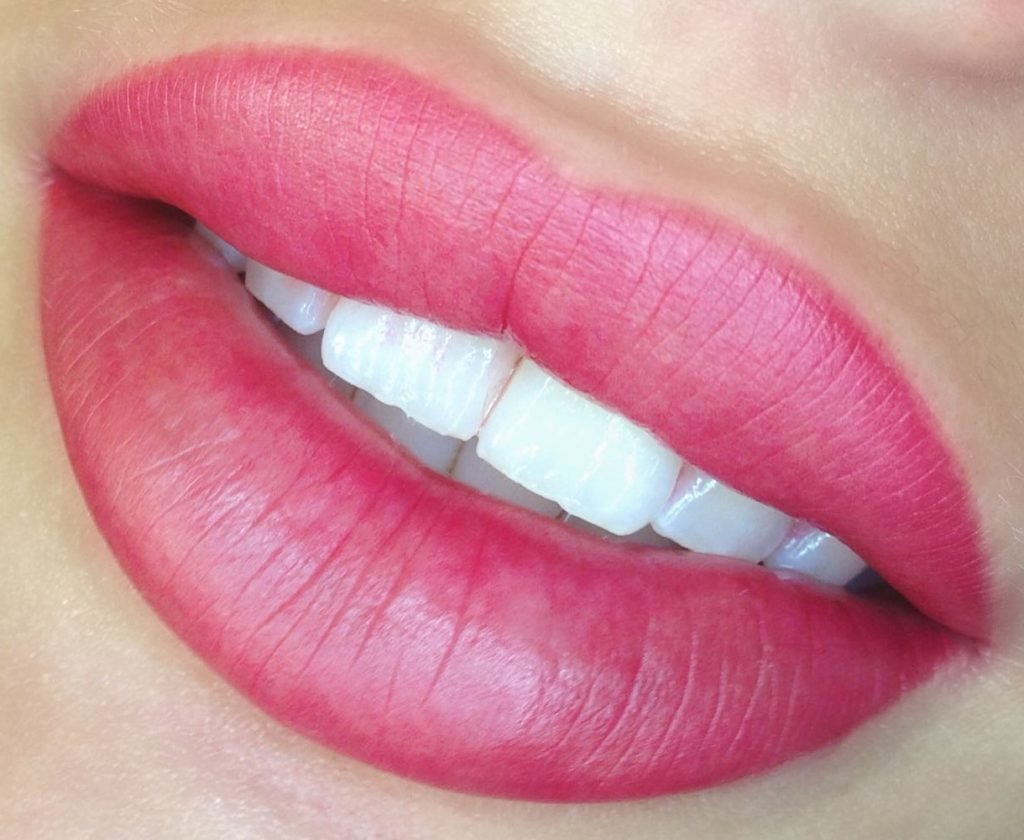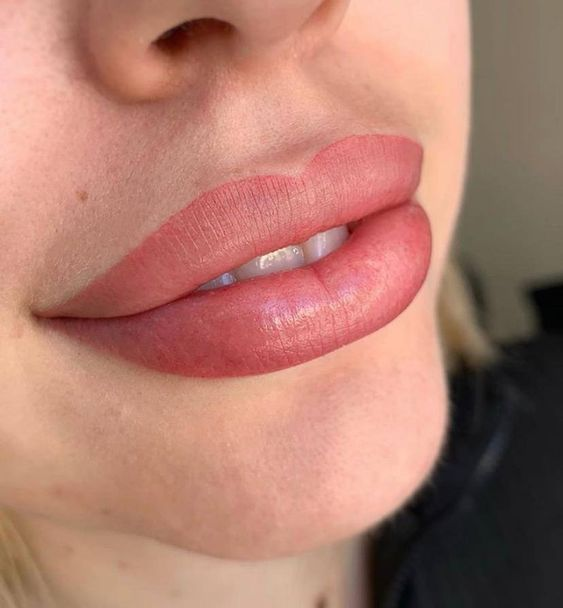The quest for beauty enhancements often leads many to consider permanent cosmetic solutions, such as lip tattoos. While the convenience of waking up with perfectly colored lips every morning is appealing, it’s natural to wonder, Can lip tattooing go wrong? The short answer is yes, like any cosmetic procedure, there are risks involved, which range from minor complications to more severe reactions. This article delves into the intricacies of lip tattooing, addressing the potential for things to go awry and the measures you can take to ensure a safe and satisfactory experience.
The Appeal of Permanent Lip Color

In recent years, cosmetic tattoos have surged in popularity as individuals seek out long-lasting beauty solutions. Gone are the days of relentlessly reapplying lipstick throughout the day; cosmetic tattoos offer a time-saving and confidence-boosting alternative. The industry has grown significantly, as have advancements in technique and pigmentation, which can result in a more natural and subtle lip enhancement.
The Promise of Perfectly Tinted Lips
The allure of permanent makeup lies not only in its endurance but also in its ability to craft an ideal lip shape and color. A lip tattoo’s transformative power can correct asymmetry, define contours, and imbue the lips with a healthy, vibrant hue. For many, the potential benefits are enough to outweigh concerns about the procedure.
What Is Lip Tattooing?

Lip tattooing, often referred to as lip blushing or lip pigmentation, is a semi-permanent procedure that enhances the natural color and shape of the lips. Unlike traditional tattoos that use ink, lip tattoos typically employ pigments that are designed to fade over time. The goal is not to create a bold, opaque effect but rather a soft wash of color that mimics the lips’ natural tone.
The Procedure: How Lip Tattoos are Applied
The lip tattooing procedure begins with a consultation to discuss desired outcomes and any potential allergies. The artist then sketches out the design, outlines the shape, and selects pigments. Using a specialized needle, the pigment is carefully implanted into the surface layer of the skin. The entire process usually takes between one to three hours.
Potential Risks of Lip Tattooing
As with any procedure that breaches the skin, lip tattooing poses immediate risks such as pain during the session and swelling post-procedure. Adequate preparation and aftercare are critical to mitigating these reactions. Additionally, there’s a risk of infection if proper hygiene practices aren’t followed by the studio or during the aftercare process.
Long-term Complications: Allergies and Unsatisfactory Results
Over time, some individuals may experience allergic reactions to the pigments used. Meanwhile, others might find the color fades unevenly or doesn’t match their expectations, leading to dissatisfaction. These issues can sometimes necessitate corrective procedures, which come with their own risks and expenses.
Horror Stories: When Lip Tattoos Go Wrong
Lip tattoo horror stories abound, from severe infections that require medical intervention to botched colors that result in an unnatural appearance. Such occurrences often lead to emotional distress and a loss of trust in cosmetic procedures. Additionally, the cost of corrections, which may require multiple sessions, can vastly exceed the initial lip tattooing price.
Choosing the Right Professional
To mitigate risks, it’s imperative to choose a qualified and experienced professional. A competent artist will have a portfolio of work to show, positive client testimonials, and a clean, sanitary working environment. Inquiring about their training and experience with lip tattoos specifically can help ensure you’re in good hands.
Here is a list of qualifications to consider when selecting a lip tattoo artist:
- Professional certification or license in permanent makeup.
- Sufficient experience with a well-documented portfolio.
- A clean, sterile studio environment with up-to-date equipment.
- Transparent communication about the procedure, risks, and aftercare.
- Testimonials or reviews from previous clients.
Aftercare: Protecting Your Investment
After the lip tattooing procedure, following a strict aftercare regimen is essential to prevent infection and promote optimal healing. Your artist will provide instructions, which typically involve keeping the area clean, avoiding certain foods, and applying healing ointments. Neglect in aftercare can lead to compromised results and health concerns.
It is crucial to discern the signs of normal healing from those that might indicate complications:
| Signs of Healing | Signs of Trouble |
|---|---|
| Mild to moderate swelling | Excessive or prolonged swelling |
| Gradual fading of color | Sudden color changes or patchiness |
| Temporary scabbing or flaking | Oozing, pus, or severe scabs |
| Mild discomfort | Intense or increasing pain |
Can You Reverse a Lip Tattoo?
In the event of an unsatisfactory result or a change of heart, reversal options for a lip tattoo exist, such as laser removal. However, these methods can be costly, painful, and not always entirely effective. The decision to undergo a reversal procedure should be carefully considered, weighing both the physical and financial implications.
Despite the risks, with proper care and an expert artist, a lip tattoo can be a safe addition to your beauty regimen. Listed below are the top ways to ensure the best outcome:
- Research and choose your artist meticulously.
- Follow aftercare instructions diligently.
- Maintain realistic expectations and communicate openly with your artist.
- Consider a patch test for possible allergies to pigments.
- Schedule a follow-up appointment to assess healing and color retention.
Conclusion
While a lip tattoo can enhance your appearance and save time on daily makeup routines, it’s crucial to be aware of the potential risks involved with this cosmetic procedure. Thorough research, choosing an experienced and reputable artist, and following strict aftercare guidelines can minimize the likelihood of complications and ensure the best possible outcome for your lip tattoo.
FAQs About Lip Tattooing
- Q1: How long does a lip tattoo typically last?
- A1: A lip tattoo can last anywhere from 1-3 years, with some lasting up to 5 years before needing a touch-up. However, the longevity varies depending on factors like the quality of the pigment used, exposure to sunlight, and individual metabolism.
- Q2: Is the lip tattooing procedure painful?
- A2: Pain tolerance varies from person to person, but generally, lip tattooing is considered to be uncomfortable. Many artists offer numbing options to help reduce discomfort during the procedure.
- Q3: What should I do if my lip tattoo appears to be infected?
- A3: If you suspect an infection, it’s crucial to seek medical advice immediately. Signs of infection include excessive redness, swelling, pain, pus, or fever. Early treatment is important to prevent complications.
- Q4: Can I get a lip tattoo if I have cold sores?
- A4: If you have a history of cold sores (herpes simplex virus), inform your tattoo artist beforehand. A preemptive antiviral medication may be recommended to prevent an outbreak triggered by the procedure.
- Q5: How do I choose the right color for my lip tattoo?
- A5: Work with your tattoo artist to select a color that complements your natural lip color and skin tone. Keep in mind the color will fade over time, so choosing a hue that will age gracefully is important. Your artist can provide a professional recommendation based on their experience.



